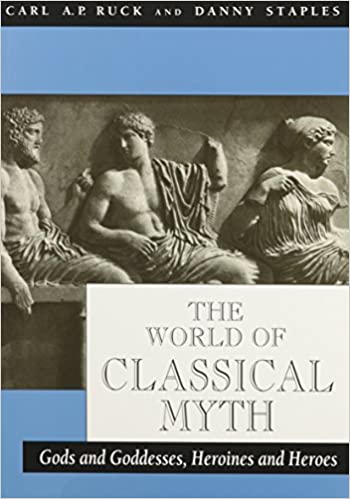Mushrooms, Myth and Mithras: The Drug Cult that Civilized Europe
This illustrated book traces the history of an unlikely force in the shaping of Western civilization: the use of psychedelic mushrooms, namely by a secret society called the cult of Mithras. Nero was the first emperor to be initiated by the group's "magical dinners," and most of his successors embraced the ritual as a source of spiritual transcendence. The cult was officially banned after the Conversion, but aspects of their rituals were assimilated or co-opted by Christianity, and the brotherhoods persist today as secret societies such as the Freemasons. This is a fascinating exploration of a powerful force kept behind the scenes for thousands of years.
$24.95

The Effluents of Deity: Alchemy and Psychoactive Sacraments in Medieval and Renaissance Art
The prime doctrine of alchemy was that what was above mirrored what was below. From this it follows that manipulating what was below could exert a profound influence upon the realm above.
Alchemy was a dual process in which physical and chemical or metallurgical changes had a parallel spiritual aspect, both personal and cosmic, so that the transformations occurred also within the retort of the body of the practitioners of the art, who sought to transmute leaden consciousness to celestial transcendence and perhaps even manage to move the stars. What flowed from the body of the deity, as an alchemical vessel, was a magical sacrament offering mystical communion with its divine source.
The main focus of this study is van Eyck's Ghent Altarpiece known as the 'Mystic Lamb.' It was intended as a complex talisman to influence the ascendancy of Burgundy and the coronation of its Duke, Philip the Good, as the Pope's choice to rule over the New Jerusalem of John's Apocalyptic Revelation. Its completion coincided with the Duke's inauguration of the elite chivalric Order of the Golden Fleece. The river of the alchemical aqua vitae that flows from the throne of God and the Lamb in the Altarpiece encodes the secret of their psychoactive initiatory Eucharist.
The context for van Eyck's masterpiece includes the visionary scholarship of the Jewish Cabbala and medieval Christian mystics, Chretien de Troyes' Conte du Graal, and such other artistic masterpieces as St. Berward's Michaeliskirke, Filippo Lippi's series of Adorations painted for his Medici patron's, and Petrus Christus' paintings for the Order of the Dry Tree, as well as other works of van Eyck and his contemporaries that were intended to serve as aids for mystical meditation.
A final chapter examines the nature of the Eucharist at the time John's Revelation.
$45.95

The Apples of Apollo: Pagan and Christian Mysteries of the Eucharist
Ruck and two accomplices, none identified, take turns or work together to explore a complex of rituals involving the god Dionysos, seeking to discover the original food of the sacramental communion. Among their perspectives are mistletoe, centaurs, and datura; Perseus the mushroom picker; and Jason the drug man. An underlying ethnopharmacological theme emerges. Annotation c. Book News, Inc., Portland, OR (booknews.com)
Click for reviews by José Celdrán: Reseña Review
$32.95
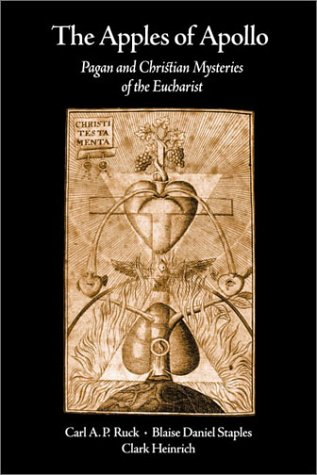
The Hidden World: Survival of Pagan Shamanic Themes in European Fairytales
It was mainly only the European urban centers that converted to Christianity, and often more for political or commercial interests, than as a matter of faith. The old religions persisted in the villages or pagani, from which the term Paganism arose. The Christians built their sanctuaries upon the pagan sites, expropriating their numinous past, assimilating the symbolism of the former deities, and commonly incorporating the actual architectural remnants. The wisdom of those deposed gods and their rites persisted in less objectionable forms - disguised to delude the censors - as country festivals and quaint tales often about the fairy folk, who coexisted with this world and could be accessed by magical procedures that perpetuated half-remembered methods of authentic ancient shamanism.
Such shamanism always involved pharmaceutical expertise. Mircea Eliade was mistaken in concluding that drugs were characteristic only of the late and decadent stages of a religion. Rock paintings of the greatest antiquity and his own abundant citations indicate that, instead, a pharmacological Eucharist was the norm; and Eliade was himself about to reverse his stance shortly before his death.
Encoded in tales seemingly as simple as Snow White with her poisoned red and white apple are themes traceable back to the great epics of Homer and the Mesopotamian Gilgamesh. These patterns of shamanic empowerment lurk also in the histories of the leading families of Europe, who could not completely divest themselves of the former religious basis for their right to rule, but instead they embraced, Christianized, and buried it in sanctified graves, as was the case with the great fairy Melusina, whose eighth abominable son, called Horrible, was murdered. A number of churches involved in the Albigensian heresy claim his body was laid to rest beneath them.
$39.95
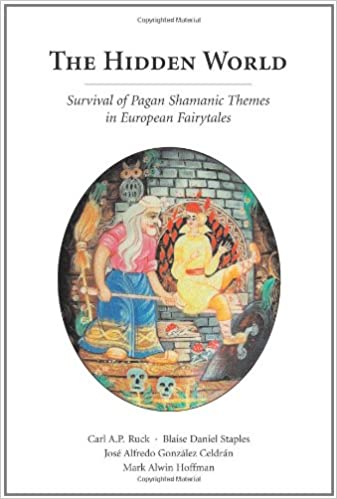
The Great Gods of Samothrace and The Cult of the Little People
The deities went by the name of the Great Gods, a mysterious group of numinous powers who presided over religious ceremonies on the northern Aegean island of Samothrace and elsewhere, termed a Mystery because things happened that must never be divulged to outsiders. The importance of the Mystery was second only to the great Eleusinian rite.
This investigation into the secret of the Mystery begins with the famous sculptural group of the Winged Victory of Samothrace and leads through a bizarre assemblage of mythological events that includes the drunken sailing of the loon on an amphora filled with wine, the enchained rapture of souls linked to the attractive force of the magnetic stone, the thievery of the infant Hermes, obscenities and ithyphallic creatures, the stench of metallurgy, islands of wanton women and other seductively noisome smells, murder in the fields sown with grain, talking heads that sprout in the path of the plowshare, the founding of Rome, the voyage of the Argonauts and the great sorceress Medea, the riddle about the divinatory liver of Prometheus - finally to the ultimate destination: a magical herbarium at the center of a magnetic fortress in which there is a single giant tree overshadowing the entire expanse of toxic plants, and at its base the tomb of the dwarfish great god Zeus.
The final view is the Golden Parchment that was the alchemical formula for transcendence and J.M.W. Turner's depiction of the Vision of Medea, reveling in the full-tide of her witchery.
$44.95

The Road to Eleusis: Unveiling the Secret of the Mysteries
The secretive Mysteries conducted at Eleusis in Greece for nearly two millennia have long puzzled scholars with strange accounts of initiates experiencing otherworldly journeys. In this groundbreaking work, three experts--a mycologist, a chemist, and a historian--argue persuasively that the sacred potion given to participants in the course of the ritual contained a psychoactive entheogen. The authors then expand the discussion to show that natural psychedelic agents have been used in spiritual rituals across history and cultures. Although controversial when first published in 1978, the book's hypothesis has become more widely accepted in recent years, as knowledge of ethnobotany has deepened. The authors have played critical roles in the modern rediscovery of entheogens, and The Road to Eleusis presents an authoritative exposition of their views. The book's themes of the universality of experiential religion, the suppression of that knowledge by exploitative forces, and the use of psychedelics to reconcile the human and natural worlds make it a fascinating and timely read. This 30th anniversary edition includes an appreciative preface by religious scholar Huston Smith and an updated exploration of the chemical evidence by Peter Webster.
Signed, 25th anniversary edition: $125.00
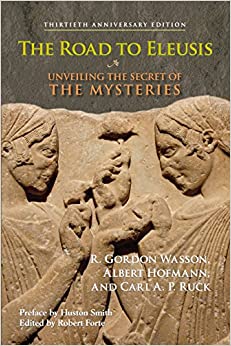
The Son Conceived in Drunkenness: Magical Plant
An essential aspect of the traditional stories or myths about the Greek heroes has been intentionally overlooked in the study of Classical literature and religion, specifically, the pivotal role accorded to magical plants and religious sacraments derived from psychoactive botanical and venomous animal sources, serpents, reptiles, and the like. The Son Conceived in Drunkeness remedies this oversight.Toward the end of the great expansion of consciousness now known as the Psychedelic Revolution of the 60s and 70s, Dr. Ruck proposed a new word for such mind-altering substances to free them from the implications of irreverent recreational abuse and the irresponsible marketplace of New Age pseudo-scientific theologies. This word is entheogen, a substance that allows the deity to reside within the human. The most direct mode of access is the simple ingestion or other method of application of the sacrament so that the entheogen forms the mediating pathway between the human and the divine.Ultimately, this magical club that is the hero¿s weapon of choice will emerge as the rod of Asklepios, wielded by the modern profession of medicine in the battle waged with drugs and toxins on the frontier of the battle between life and death.
$29.95
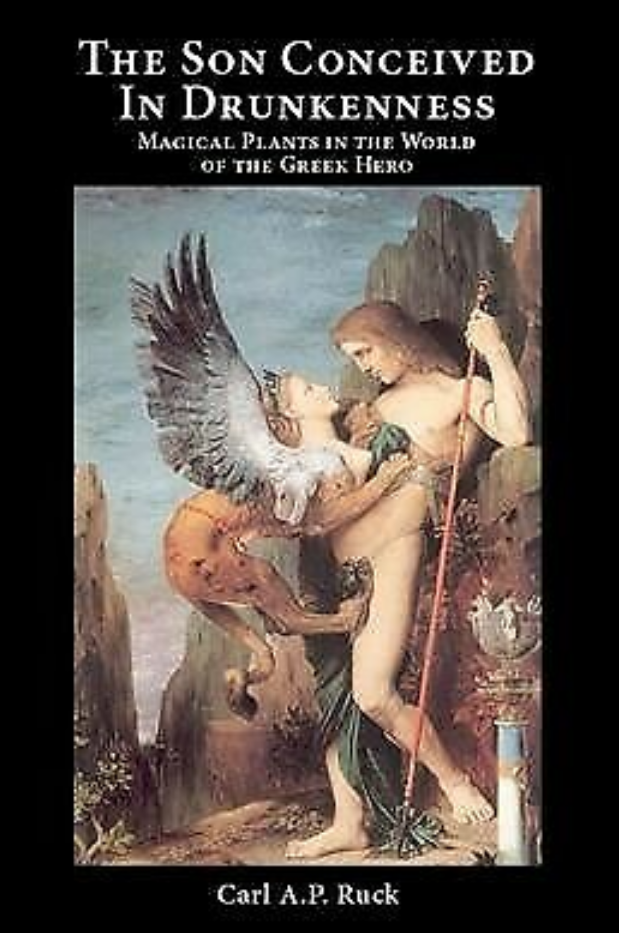
Dionysus in Thrace
This book concerns the role of psychoactive mushrooms in ancient Greek religion. It brings together an extraordinary team of experts to present key archaeological discoveries and to attempt to place them in their historical, religious, and mythological context. Yes, there were mushroom cults in antiquity, and they were involved with some of the most memorable achievements of the Classical tradition, not only in works for the Theater of Dionysus, but also in the visionary experiences of some of the greatest philosophers and mathematical theorists. In the form of Orphism, a warrior initiation of the ancient Thracians was strengthened in the seventh century by contact with similar rites of the Persians and reinterpreted and given a mystical dimension that assimilated even Judaism and Christianity.
$44.95
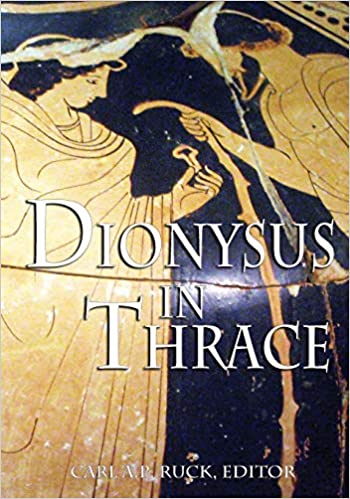
The World of Classical Myth: Gods and Goddesses, Heroines and Heroes
$25.95
